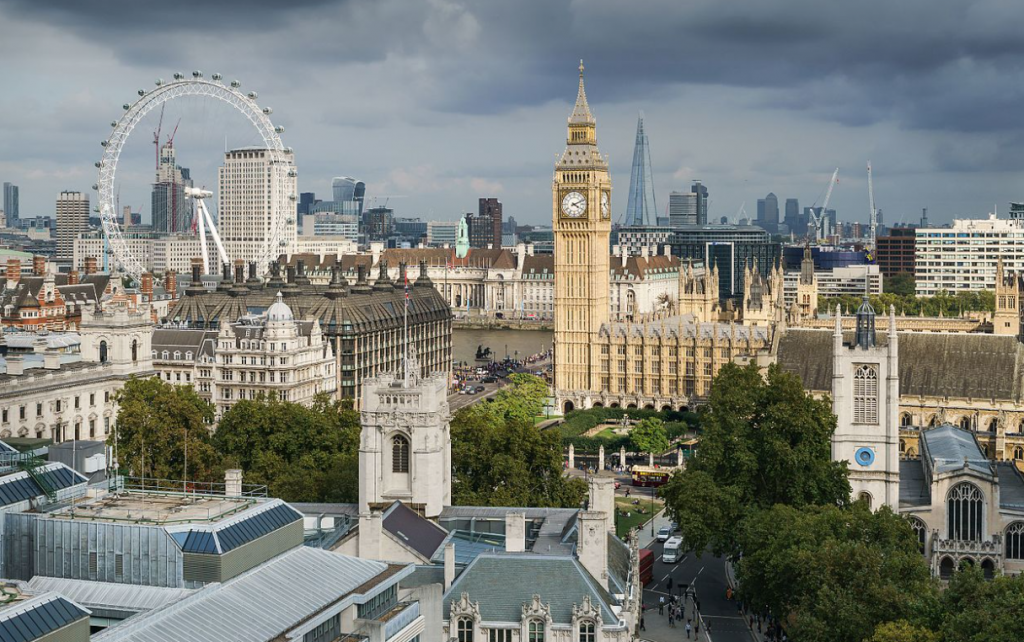It’s one of the most famous buildings in London and the United Kingdom.
In this post, you’ll discover the ultimate list of facts about Big Ben, one of the best-recognized towers in the world!
1. What is Big Ben?
Big Ben is the big bell inside the famous clock tower in London. It’s the nickname of the bell, even though many people refer to the clock and the clock tower as Big Ben as well. The tower’s construction was completed on May 31, 1859.
This amazing bell tower is undoubtedly one of the most famous and best-recognized landmarks in the United Kingdom and has become a symbol for the city of London.
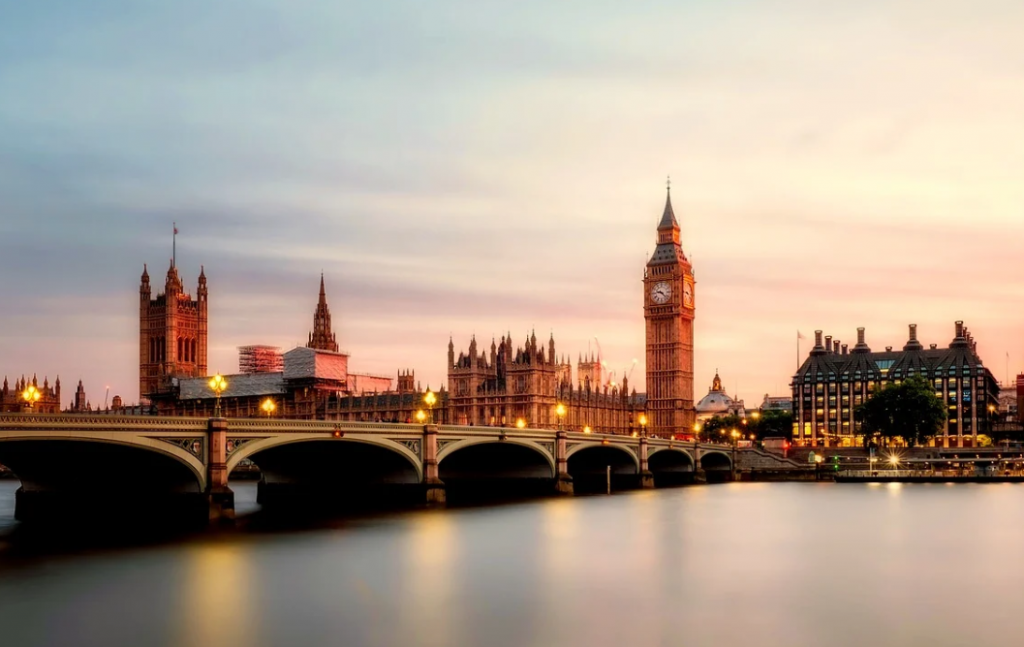
2. It’s located in Westminster
Big Ben is located at the north end of the Palace of Westminster, right next to Westminster Bridge in the Westminster neighborhood in the center of London.
Other landmarks in the area include Westminster Abbey, the London Eye, Trafalgar Square, Westminster Cathedral, and St James’s Park.
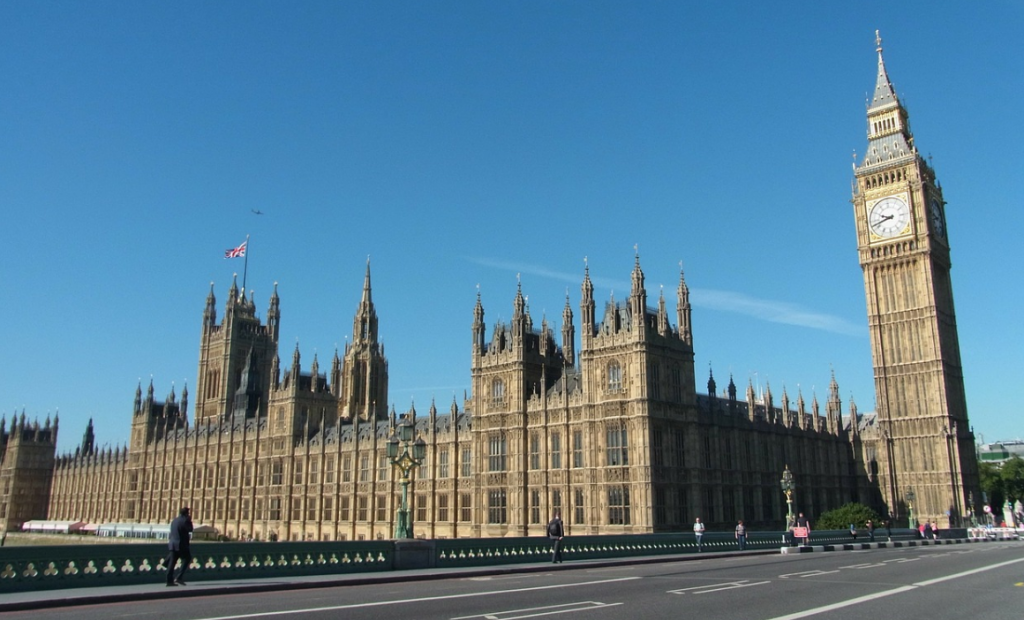
3. The tower was renamed in 2012
Big Ben is located inside a tower that was originally named the “Clock Tower.” During Queen Victoria’s reign, the tower was also unofficially referred to as the “St Stephen’s Tower,” because Members of Parliament (MPs) originally sat at St Stephen’s Hall.
Its official name, “Clock Tower,” was changed through a vote of approval of 331 MPs to “Elizabeth Tower” in the year 2012. The reason was to honor Queen Elizabeth II for her Diamond Jubilee year, 60 years after her accession to the throne. This is similar to how the Victoria Tower was renamed as such in the Diamond Jubilee year of Queen Victoria in 1897.
Prime Minister David Cameron officially announced the change of name on September 12, 2012, followed by a ceremony in which a name plaque was attached to the tower.
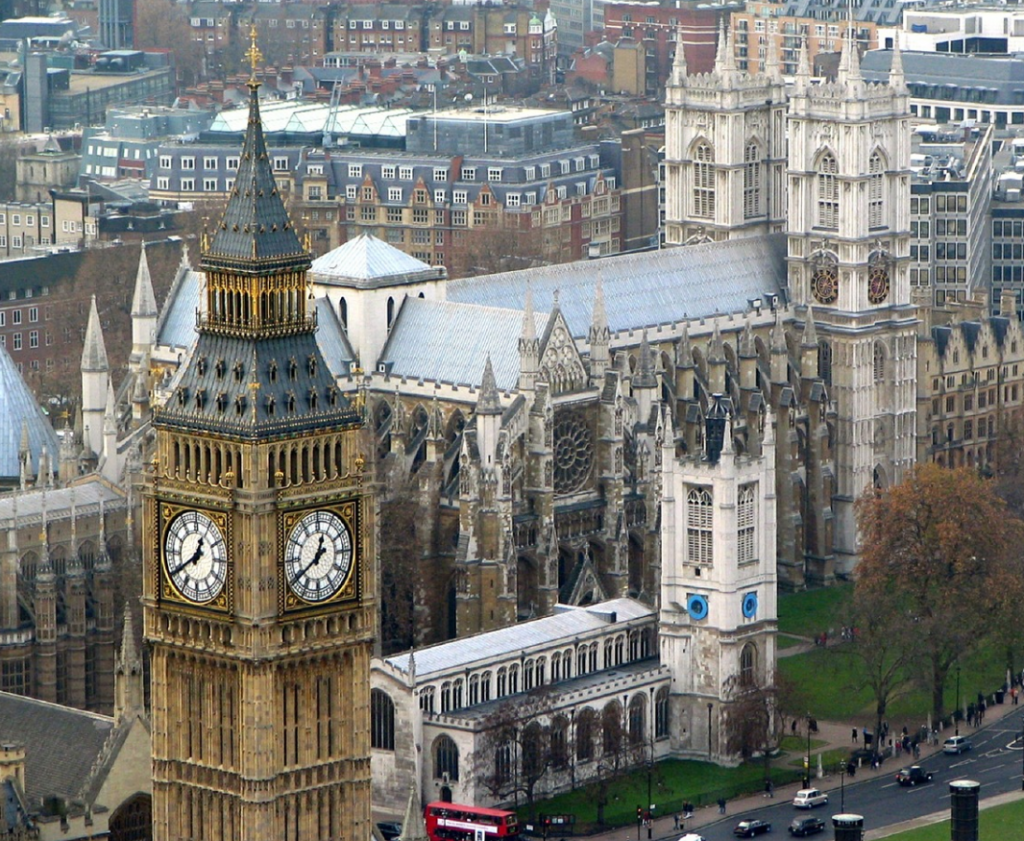
4. It was built because the old palace burned to the ground
The Elizabeth Tower, previously known as the Clock Tower, was part of the design of the Palace of Westminster by Charles Barry, a renowned English architect. He did, however, leave the design of the tower itself to Augustus Pugin.
The reason the Palace of Westminster was being rebuilt is that it was destroyed by fire on the night of October 16, 1834. Therefore, most of the old buildings were demolished to make way for the new Palace of Westminster which is also referred to as the “Houses of Parliament.”
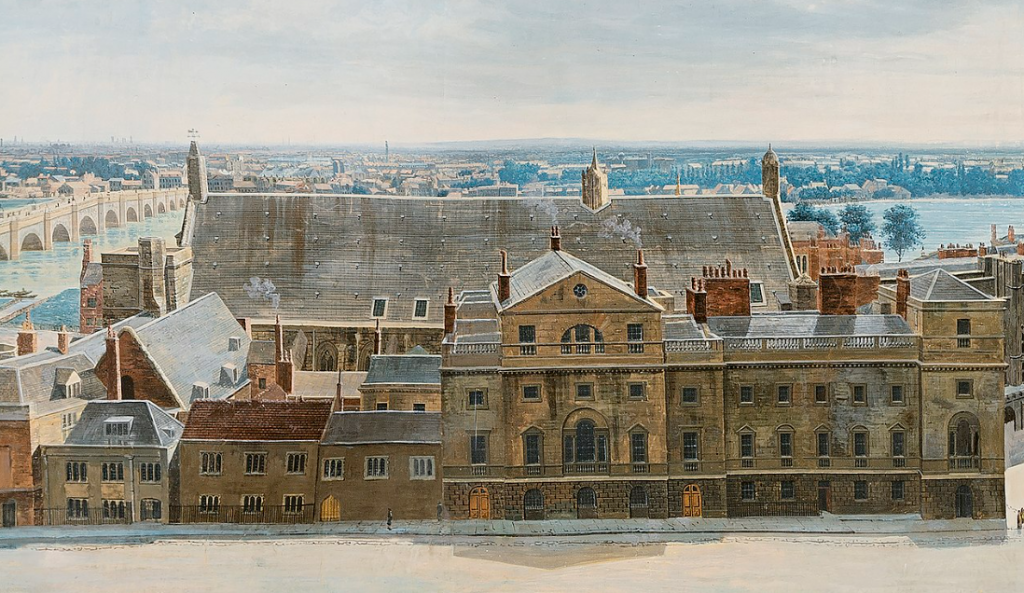
5. It was designed by the pioneer of Gothic Revival
The Palace of Westminster was built in the “Gothic Revival” style, a popular architectural style in England starting in the 1740’s up until the 19th century.
Big Ben itself was designed by Augustus Pugin, another famous English architect, who also worked on the interior of the Palace of Westminster. Pugin was known for his pioneering role in the neo-Gothic Style
One of the most interesting facts about Big Ben is that it actually was the final project of Pugin, who had struggled with mental illness for a long time and went mad shortly after finishing the design.
Pugin didn’t live to see the completed tower because he passed away in 1852 at the age of 40, while Big Ben was only completed in 1859.

6. How big is Big Ben’s clock tower?
The Elizabeth Tower stands 315 feet (96 meters) tall. The first 200 feet (61 meters) of the tower is constructed with bricks and clad with sand-colored Anston limestone, quarried in South Yorkshire. The rest of the tower has a cast-iron frame.
The tower is built on a strong foundation going 13 feet (4 meters) below the ground and made of 10 feet (3 meters) thick concrete on a 50 feet (15.2 meters) square.

7. The clock tower actually has 5 bells
Big Ben is the nickname of the biggest bell in the Elizabeth Tower. The tower actually consists of 4 more bells as well.
While Big Ben itself plays every hour of the day, the other 4 bells are playing the Westminster Quarters every quarter-hour.
One of the most remarkable facts about Big Ben is that every first stroke of every hour has correctness of up to 1 second. And yes, it’s the first stroke that marks the hour.

8. The clock is very accurate, except when it snows
The biggest problem for the clock, apart from the occasional repairs and maintenance, is heavy snow. If it snows heavily, it’s possible that the progress of the hands is affected.
The first time in history that the clock of Big Ben stopped was in 1878 due to large amounts of snow which made it impossible for the hands to move properly.
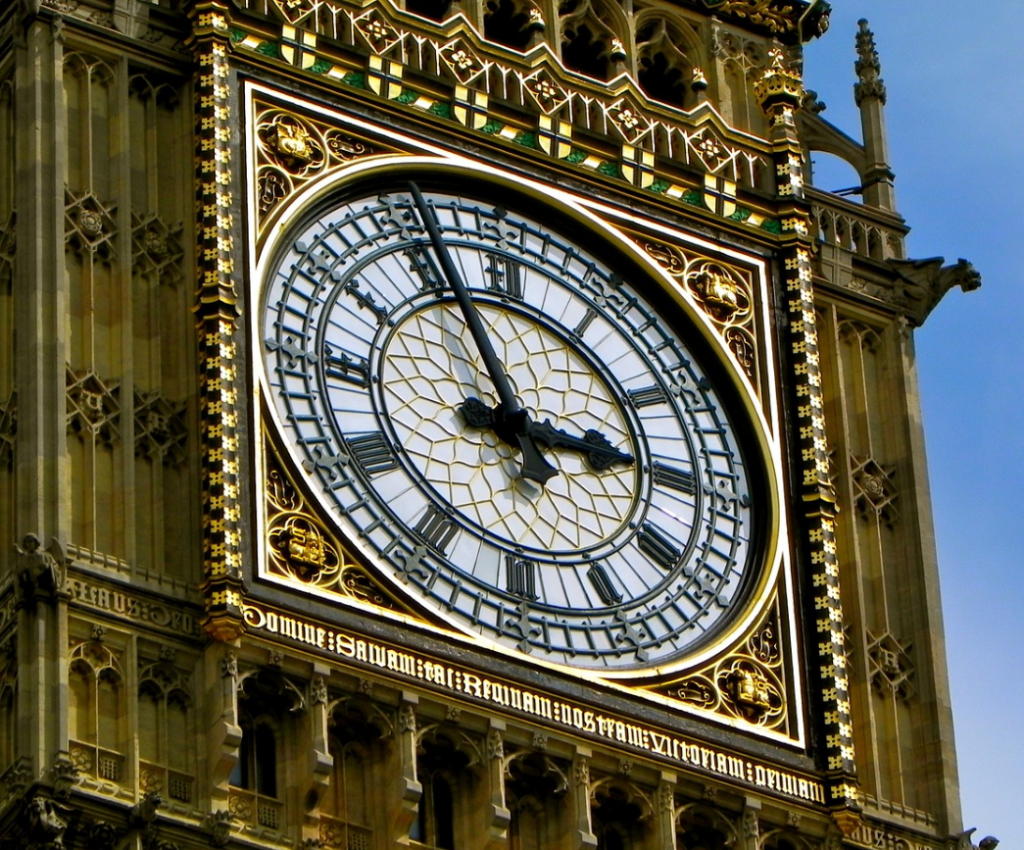
9. You can hear the bell strike 13 times
Did you know that the speed of sound is relatively slow?
Well, this is emphasized by the fact that people living near Big Ben are actually able to hear the bell strike 13 times every hour.
In order to do so, it’s required to listen to the radio and hear the real bell at the same time. The strikes of the bell transmitted by radio arrive first, while the sound of the real strikes arrives a second later.
This way, Londoners living in the area can hear the bell 13 times!

10. It was the largest bell in the UK upon completion
The biggest of the 5 bells in the Elizabeth Tower is officially called the “Great Bell” and nicknamed “Big Ben.” It was cast on April 10, 1858, at the Whitechapel Bell Foundry in the London Borough of Tower Hamlets.
This enormous bell weighs a total of 13,500 kilos (29,762.4 lbs) and was transported with a trolley through the city of London pulled by 16 horses to the cheers of an enthusiastic crowd. A scene like this would be repeated multiple decades later in Paris when the bell of the Sacré-Coeur was moved in a similar fashion.
Upon arrival, the bell, which is 7 feet 6 inches (2.29 meters) tall and has a diameter of 9 feet (2.74 meters), was pulled into position at a height of 200 feet (61 meters) into the tower’s belfry. This endeavor took a total of 18 hours to pull off.
Upon completion, the Great Bell was the largest bell in the United Kingdom, a record it held for 23 years until it was surpassed by “Big Paul” in 1881, the biggest bell of St. Paul’s Cathedral Belfry in London.

12. The current bell is actually the second
The current bell was actually the second version of the Great Bell. The first bell was cast by “John Warner and Sons” in a town called Stockton-on-Tees in County Durham in the north of England, which is also known for its Norman Castle.
The original bell weighed even more than the current bell with a total weight of about 16,000 kilos (35273.96 lbs).
Upon arrival, the tower was not yet finished and it was stored in the Palace of Westminster’s yard. It’s here that the original bell was tested and cracked beyond repair. Therefore, the second bell was created.
13. The second bell cracked as well
The Great Bell of the newly built Clock Tower rang out for the first time on July 11, 1859. This success was relatively short-lived because, in September of the same year, the new bell also cracked.
The Great Bell was stopped and the hourly strikes were replaced by one of the quarter bells of the tower. Big Ben was silenced for a total of 4 years.
In 1863, a 3-fold solution to the issue was found. First, the bell was slightly turned so the hammer would strike on another location, the hammer was made lighter, and a small square was cut into the bell to avoid the crack from becoming bigger.
Apart from short breaks every now and then for repairs, the bell has struck ever since 1863!
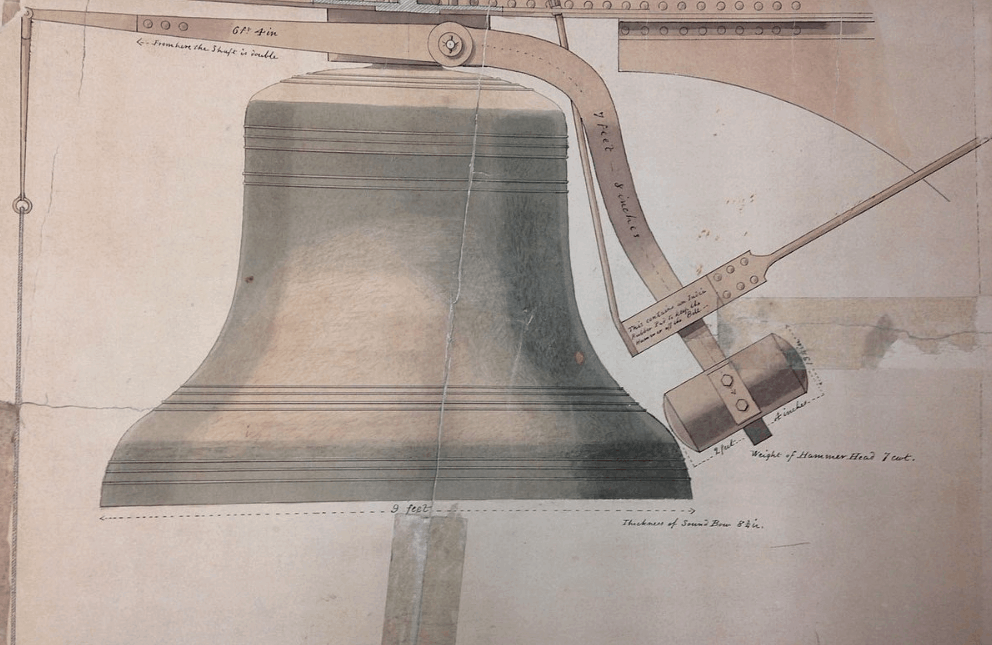
14. How did Big Ben get its name?
How the nickname “Big Ben” came about is still a mystery and up for debate. We do know however that the nickname was first given to the biggest bell in the clock tower, not the tower itself. Only later was the nickname used to define both the bell and the tower.
There are two theories as to who Ben really is:
- Sir Benjamin Hall, the man supervising the installation of the Great Bell.
- Ben Caunt, a popular champion heavyweight boxer of the 1850s.
Neither theory can be verified at this moment.
15. Is Big Ben the second Leaning Tower of Pisa?
The Leaning Tower of Pisa was in great danger. A weak foundation in combination with unsuitable soil caused the tower to lean so far that scientists were baffled why it hadn’t toppled yet. After all, all models showed it should have toppled decades earlier!
In the 1990s, a solution was found to straighten things out (literally) and the Leaning Tower of Pisa doesn’t face any danger for the next 200 years!
So is Big Ben going to be the next Leaning Tower of Pisa?
Well, the bad news is that because of changed soil conditions, Big Ben is actually leaning to the northwest by about half a meter (20 inches).
The good news is that experts believe that the lean won’t cause significant problems for another 4,000 to 10,000 years!
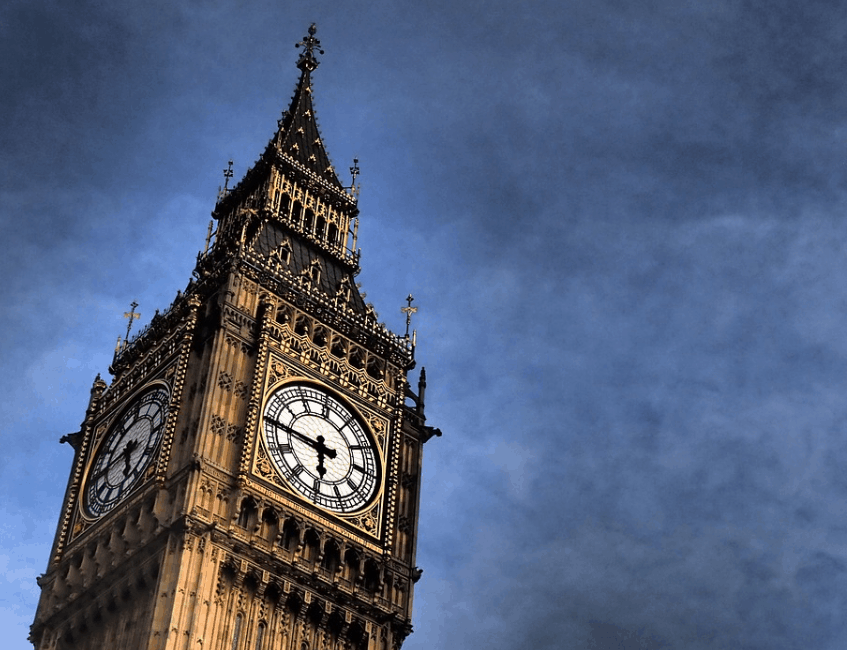
16. It was voted the most famous landmark in the United Kingdom
A survey conducted in 2008 with 2,000 people joining revealed that Big Ben was considered to be the UK’s most favorite landmark. At the same time, it has been named the most iconic film location in the UK as well!
This clearly emphasizes the cultural icon that Big Ben really is.
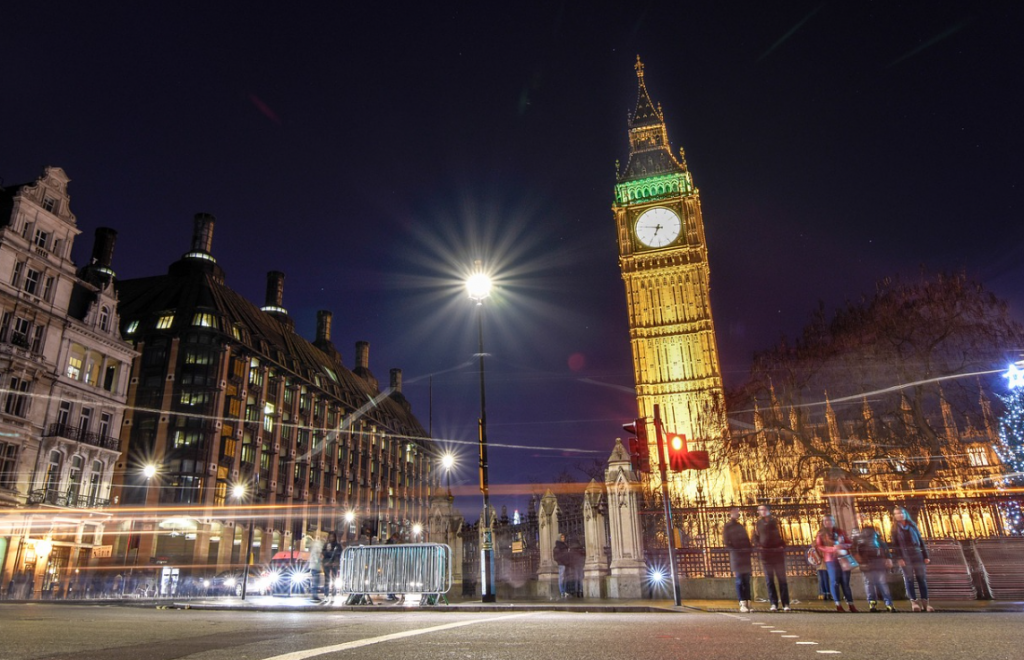
17. Foreigners can’t enter Big Ben!
As the most famous landmark in the UK, Big Ben embodies the ideal tourist attraction for visitors all around the world.
One of the most peculiar facts about Big Ben is that it’s impossible for people without a UK passport to enter the tower!
Since 2017, extensive renovations are being conducted to Big Ben which include the addition of an elevator. Without it, you have to climb the 334 limestone steps to the top!
